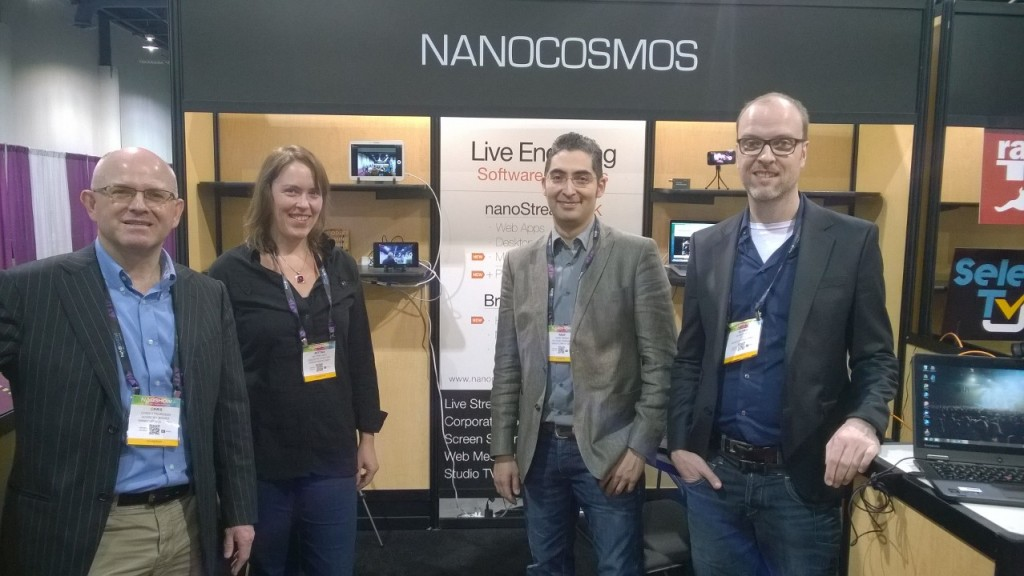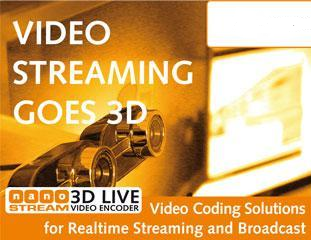Back in 1998, linear television was the dominant medium for video consumption, with broadcast, cable, and satellite television being the primary ways in which people accessed content. Video software and Streaming media was still in its infancy, and the internet was mainly used for email and basic web browsing. Digital video technology was also still in its nascent stages of development with most video productions on tape and cinema on celluloid. Google was founded the same year, and neither smartphones nor YouTube were in sight.
It was within this context of technological change and industry evolution that we founded nanocosmos, with the aim of offering user-friendly and reliable software-based video solutions to the industry.

The founding team
Maintaining a close relationship with our customers and staying up to date with industry advancements has always been a top priority for us. In our early years, we closely collaborated with the traditional broadcast industry, with our primary focus on studio production and video compression. Our roots trace back to our origins as a codec company, working in tandem with research activities at the Fraunhofer/Heinrich Hertz Institute to develop high-quality codecs, such as our MPEG software technology.
Throughout our endeavors, we have strived to develop innovative software products that are both lightweight and user-friendly, as opposed to the heavyweight production setups that still prevailed in the broadcast industry at that time.
The following years were marked by responses to new industry requirements, such as our software for TV recordings to be made directly from the computer – in real-time, which in those days meant MPEG-1 live encoding on a i386 Windows machine with hand-tuned assembler code to achieve encoding of video resolutions of 320×240 pixels, coming from an analog WinTV capture card. This technology was a significant breakthrough as it enabled real-time video processing on standard PCs. This technology was used in consumer products like Hauppauge WinTV or Roxie Toast. The next milestone was a real-time lossless video editor called nanoPEG, which made it very easy to cut and paste your own video recordings.
Later, we were managing a significant project for the Berlinale, a renowned international film festival. Our team developed a playout system for all the participating cinemas, which required close collaboration with the festival organizers to ensure its stability and seamless operation 24/7. This experience reinforced the importance of fostering strong partnerships with our clients and prioritizing stability and reliability in all our offerings. These values continue to serve as the foundation of our business today.

Nanocosmos at NAB Show 2013
It was around 2013 when everything changed. As the internet and digital video technologies continued to advance, and mobile devices were getting more suitable for video, we were one of the first providers of video streaming toolkits for all devices including iOS and android. One milestone project was Stringwire, an early live broadcast app developed for NBC Universal for Citizen journalists. This was even before any of the large vendors like Twitter, Facebook or YouTube Live were available.
The increasing demand for real-time video based on low latency delivery made us start to pivot towards cloud technology and server-based interactive applications around 2015. This was when we created H5Live, our unique technology for live playback with ultra-low latency on all browsers at scale, which positioned us as pioneers in the field of real-time streaming.

With the rise of streaming solutions, we started to see the traditional linear TV model decline, while online media gained more traction. This opened up new opportunities for content creation, particularly for businesses that wanted to interact more directly with their audiences. That’s when we decided to create our interactive live streaming platform, nanoStream Cloud, focusing on B2B and offering a complete, lightweight and easy to use API set to deliver real-time video.
Live streaming continued to gain momentum, regardless of the platform – be it social video via Instagram or TikTok, or the emergence of new platforms for B2B. As a result, both consumers and businesses began incorporating daily streaming into their routines to connect with their audiences. However, the most significant development was yet to come.
The pandemic of 2020 brought about a transformation in the way we consume online content. With restrictions preventing people from leaving their homes, online video content became a popular trend. Hybrid and virtual events also emerged as the new standard, with corporate meetings requiring thousands of employees from around the world to interact through streaming sessions. In addition, traditional physical businesses began exploring new online monetization strategies, leading to the increased popularity of iGaming and Sports Betting. Through this journey, we have had to push our boundaries even further to achieve 100% uptime, 24/7 operations, global reach and of course, the highest quality of service and experience as the audience has become even more demanding.

After twenty five years we can say evolving from a codec company to a real-time streaming leader has reflected the broader changes in the media landscape over the past two decades. The rise of the internet, digital video technologies, and the decline of linear TV has led to new opportunities and challenges for the industry. Our focus on reliable client partnerships and stability and lightweight software products has helped us remain at the forefront of the industry. Looking ahead, we are committed to creating new solutions that help businesses and audiences connect via live video and remain relevant in the ever-changing media landscape.










